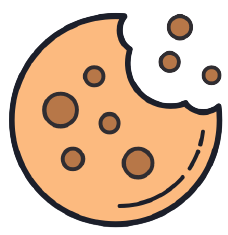Pranayam, regulation, and control of breath, is a cornerstone of Indic yogic tradition. Modern science, too, hints at the profound impact of breath on our physiology, mood, and overall well-being.
Pranayam means regulation and control of pran, breath. It is one of the major tenets of Indic yogic system. The first definition of pranayam was given by Sage Patanjali in his Yog Sutras. He also identified pran as breath. Nevertheless, several commentators and practitioners later on defined it as a vital force, and cosmic energy.
Pran is the air we breathe and inhale which consists of particles, molecules, microbes, viruses, or any other material in the air surrounding us. And physiological interaction with our mind and body to give us energy is the real meaning of pran.
A minute of the air we breath goes to the brain directly via the olfactory bulb — a section above the nose which gives us the sense of smell. This input to the brain tells us immediately about the nature of the environment. Depending upon this input, brain sendsd appropriate signals to the various parts of body to take necessary action. If brain senses danger, then auto-immune system is activated and if not then the system does not do anything, and the body is relaxed and helps, sometimes in producing serotonin, happiness molecule, giving us a sense of well-being.
The rest of air goes to our lungs and produces energy by interacting with molecules of the food we eat. The waste product of this interaction is carbon dioxide which must be expelled. Both these functions; inhaling oxygen and exhaling carbon dioxide are done by the lungs. This is like an internal combustion engine which takes in oxygen; interacts with fuel and throws out carbon dioxide. In the process of this exchange, it also produces power. Thus, the gas exchange in our lungs also produces energy which is the source of power through our muscles. Probably this could be the basis of pran as life force.
When we inhale pure air then the conversion efficiency in our lungs is high It reduces when we inhale polluted air. Thus, inhaling air from good and happy surroundings gives us a sense of well-being. We get this feeling when the environment is pristine and without any pollutants and also when we smell pleasant and fresh air. Thus, the air we breathe changes changes our mood and subsequently our body and this probably give rise to the meaning of pran or life force.
All life forms have evolved so that signals from surroundings are first sensed by the brain either by olfactory lobe or by specialized receptors like forked tongues in retiles. After their receipt, the brain then sends appropriate messages to different parts of the body.
Often practitioners of pranayam claim that it helps them calm their nerves and gives them a sense of well-being. The reason is that the act of pranayam allows us to easily focus on breathing and this focus on anything for considerable time is meditation. Prananyam helps in concentration.
Besides different pranayam exercises also help the lungs, nasal cavities, and general well-being. A minute quantity of what we breathe in goes directly to the brain via the olfactory lobe by breaching the blood/brain barrier (BBB). These particles, microbes, viruses somehow change the communication among neurons which allow the brain to send appropriate signals via the vagus nerve altering the rest of the body. Exact mechanism of how this happens is not known.
Such signals, in the long run, therefore, condition the body. Thus, people who live in a pristine environment and breathe fresh air have healthy mind and body make up. People who live in polluted environments and breathe unhealthy air have problems with their mind and body. This was probably the reason why yogis in ancient times preferred pristine atmosphere of the Himalayas.





